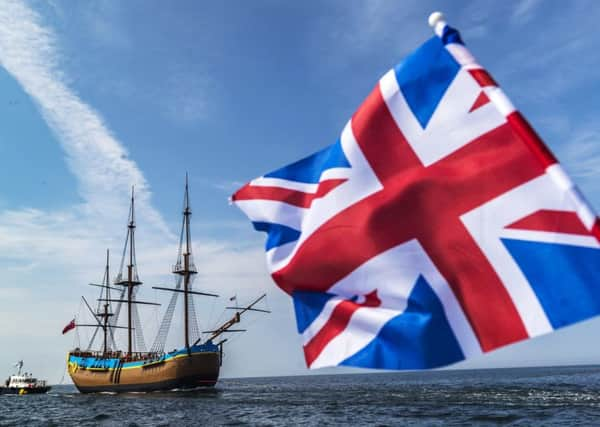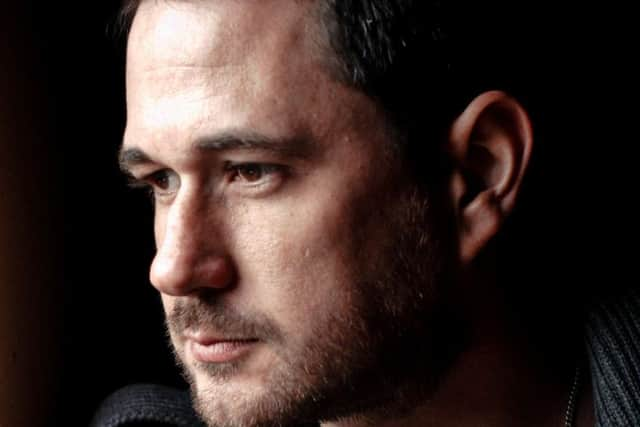Globe-trotting adventure to chart history of Yorkshire ship that changed the world


From North Yorkshire to New England via Australia and New Zealand; to help tell the extraordinary story of a ship that altered the course of world history, writer Peter Moore appropriately headed out on a globe-trotting adventure of his own that retraced the vessel’s adventures.
The 36-year-old traced the story of the ship best known as HMS Endeavour from its origins in Yorkshire as a coal-carrier to the distant shores of Australia and New Zealand first visited by the vessel in Captain Cook in the 18th Century. He also travelled to the United States as he explored a lesser-known chapter in the ship’s rich history; its role in the American War of Independence.
Advertisement
Hide AdAdvertisement
Hide AdThe in-depth research has resulted in his latest book, Endeavour: The Ship and the Attitude that Changed the World, which is being published this month to coincide with the 250th anniversary of Cook’s first voyage, which resulted in the discovery of new lands and vast swathes of new scientific knowledge. As Moore writes: “In her short life she visited Pacific islands unknown to European geographers and played a major part in the early histories of New Zealand and Australia. She transported thousands of plants, animals, watercolours, ceremonial and everyday objects back to London. In Charles Darwin’s estimation, she helped add a hemisphere to the civilised world.”


The anniversary year has brought a renewed focus on the exploits of Cook but Moore believes his book focusing on the ship’s story provides a different way to shed new light on a fascinating period of history. “The ship had three very diverse lives, it had three names,” he explains. “It was like the David Bowie of ships, it went through all these different incarnations. It was first a coal carrier called Earl of Pembroke and would take coal down from Newcastle to London. It was bought by the Royal Navy, renamed Endeavour and became an exploration vessel. There was a big mystery about what happened to it after that but it was solved in 1999 by American historians who found out it had a role in the American War of Independence under the name Lord Sandwich. These three separate lives were a really compelling thing to me. The ship’s story is a different way of getting into very different threads of history.”
Moore explains he has a long-held fascination with that period in history, dating back to his childhood visits to the Yorkshire coast.
“My mother’s family are all from the Filey area. I am from Staffordshire but we spent all our family holidays in Yorkshire. So I have been fascinated in that part of maritime history from when I was little. I remember standing on Filey beach and looking out into this great empty horizon which used to be the super-highway of the world. That just stayed with me. When I was writing about the American dimension, I discovered New York in 1776 had a population of about 20,000 people. At the time, Whitby had a population of 10,000. So New York was only twice the size of Whitby.”
Advertisement
Hide AdAdvertisement
Hide AdMuch of his research took place at the North Yorkshire County Records Office in Northallerton, while he also visited the Captain Cook museum. The ship was built in Whitby in 1764, using 200 mature oak trees. It was initially a commonplace coal-carrying vessel but the collier’s place in history was set on course when it was purchased by the Royal Navy for an expedition to the South Seas.
The voyage visited Pacific islands unknown to European geography and for the first time charted New Zealand and the eastern coast of Australia; almost foundering on the Great Barrier Reef. The book explains how the ship and its inhabitants were greeted with a mixture of fear and astonishment wherever they set ashore. “She was a floating island, a mythic bird, a bad water spirit, a sand crab, a nest of goblins,” Moore explains.
As part of his research, Moore, who teaches creative writing at the University of Oxford and City University, was able to travel to Australia and New Zealand to meet academics, museum curators and communities connected to the story after being awarded a fellowship from the Winston Churchill Memorial Trust. “It is fascinating to see how different people viewed this one ship in different places. I spoke to scholars there and all sorts of people connected to the story in different ways. That really enhanced the whole writing of it.”
It helped him explore an issue that has often gone under the radar in British retellings of the Cook story; the way in which Endeavour has become a “toxic symbol” of colonialism for many societies. As the book explains: “Endeavour is the object that made possible the dispossession of the oldest continuous human society and brought disruption to many more. The moment her topgallant masts pierced the horizon marks the end, or at least the beginning of the end, of ‘olden times’, an age of innocence and a long, painful struggle.”
Advertisement
Hide AdAdvertisement
Hide AdMoore says: “For a long, long time we have all had this retelling of Cook’s voyage we grew up with that he went to New Zealand and Australia and changed the world. Ever since the 1970s and 1980s, there has been great scholarship telling the other side of the story; the view from the shore, not the ship. But not a lot of that has made its way into the UK.”
The book recounts one incident from the perspective of the Guugu Yimithirr people, an Aboriginal tribe of Far North Queensland, who initially presented Cook’s men with gifts of fish and beads, only for events to descend into violence as the Europeans took large numbers of their turtles away and shot one of the protesting locals. “They heard a loud bang and saw a puff of smoke. One of the men could not believe that something invisible punctured his leg and blood started to flow,” the book says.
With the tribe’s spiritual beliefs meaning they saw the area of land where the incident took place as somewhere where no blood should be shed, a peace conference was held and no further violence occurred. Cook later wrote of how the Aborigines, despite - or perhaps because of - having far fewer material possessions, “are far more happier than we Europeans”.
Following the crew’s triumphant return to England after three years at sea, Endeavour itself was largely forgotten. It was eventually renamed Lord Sandwich and used by British forces in the American War of Independence. In 1778, it was among five ships deliberately sunk in an attempt to blockade a bay in Newport, Rhode Island, that French forces supporting the Americans were seeking to capture.
Advertisement
Hide AdAdvertisement
Hide AdMoore says Endeavour’s 14 years in service encompassed many key events in the development of Western society as we know it. “At the moment, it feels like we are coming to the end of an era of ‘The West’ as a collective thing,” he says. “This was the start of that process of tying together places like America and Australia and New Zealand. This was the very beginning.”
Author has won critical praise
Moore’s previous two books have won critical acclaim.
The first, Damn His Blood, reconstructed a rural murder in 1806, and his second, The Weather Experiment, told the story of 19th Century meteorologists engaged in the controversial task of attempting to predict the future by unearthing the secrets of the atmosphere.
Both were selected as Radio 4 Book of the Week, with the second made into a three-part television programme and longlisted for the Hessell Tiltman and Longman History prizes.
Moore says he hopes his latest book will enjoy similar success with audiences. “I hope it will appeal to the general reader. I hope to please the academics and people are just interested in history.”